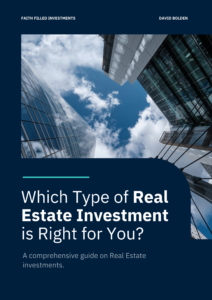August 9, 2019

Why Real Estate Investing?
If it rained for 40 days and 40 nights, at least you’ll have a roof to climb aboard, that’s if you don’t own a boat.
Okay, seriously, over 90% of the wealth holders are invested in real estate. A large percentage of real estate entrepreneurs gather together to add serious value to one another’s investment strategies, increasing chances for larger returns on investments. So, it’s safe to say that real estate investing has a proven track record of increasing in value.
I will classify the tools below as, Money on Wheels!
Taxes
- So many investors become interested in real estate investing because of the various investment property tax benefits. More specifically, because of the tax write-offs allowed against W2 income.
- However, tax write-offs, also referred to as deductions, are just one of many tax benefits that come from investing in real estate. Here’s a few to mention, Long-term capital gains, depreciation, 1031 exchanges, no self-employment or FICA (Federal Insurance Contributions Act) tax and “tax-free” refinances.
Control
- When compared to other investment avenues, like a 401k, stocks, bonds, money market account, etc., investors have more control over real estate.
- The investor decides which of the many strategies to pursue. They select the property. They pick the type of financing. They control the entire real estate investment business plan. Etc. Because of this control, the investor could directly influence the profitability of their investment project.
- When choosing to invest in the stock market, the value of the stock is tied to factors over which the individual investor has little to no control, more like serious gambling. Investing in real estate gives you the ability to directly affect the returns of a real estate project.
Opportunities
- With such a variety of opportunities to control real estate assets, there are multiple avenues for creating profits, whether it’s different investment strategies, property types, real estate investment business plans, etc.
Financial Freedom
- One of the main reasons why people are attracted to real estate is due to the prospect of financial freedom. Purchase enough cash flowing real estate to replace your corporate income and you’re free of having to work for an employer to support your lifestyle.
Money on Wheels is a phrase I like to use to classify real estate investing. We’ll call this vehicle The Money Train… A train equipped with a well knowledge operator, stops the train to allow whomever wanting to ride from point A – B to aboard. The train has been purchased at a great price which allowed money for upgrades to improve the dependability of the train as well as the traveler’s comfort and experience, offering the best returns for those choosing to aboard.
Often there are those who wanted to ride but couldn’t or maybe those who could and just didn’t for whatever reasons, being left behind holding their bags in hand, only to witness the returning passengers return unloading 2-3 times more than they departed with.
When the Money on Wheels is rolling, timing is of the essence. Opportunities do not last forever!
I’ll focus on two types of dwelling units below.
Investing in single family vs. multi-family properties continues to be one of the great debates in the world of real estate investing. While each offers several compelling advantages, each side represents a very different exit strategy for investors, including management style and income earned. Because these properties are viewed differently by investors, insurers and lenders, comprehending the ins and outs of multifamily and single-family properties is critical for success.
For those considering taking the plunge and investing in multifamily properties or single-family properties, it’s important to understand which investment vehicles do what. Deciding among single-family or multifamily properties is largely about personal preference and goals, and the following will explain the major differences between the two investments, including the various advantages and disadvantages of each strategy. If you are looking for an answer for the single-family vs multifamily debate, I recommend you to continue reading.

Multifamily Investing Benefits
A multifamily property is a type of residential housing with two or more units under one roof or several buildings within one complex. They are generally comprised of many configurations, with the most common examples being duplexes, townhouses, and some types of condos. Each unit tends to have its own living space, a separate kitchen and bathroom. Although the definition differs from situation to situation, a multifamily property will generally consist of owning a combination of the property and the land on one recorded deed. In some cases, it can be owned by one or more parties.
Investing in multifamily properties are a highly preferred choice for many investors, thanks to their additional source of monthly income, along with slow but steady appreciation. As an investor, the advantages of owning a multifamily property include:
- Bigger Cash Flow: A single-family property generates a single monthly income. A multifamily property produces multiple forms of monthly income. The appeal of investing in multifamily properties is easy to see, these investments represent an innovative opportunity to generate additional income from one investment. In addition, investors may decide to live in one unit, and rent out the others for income. When it comes to passive income retirement investing, a multifamily property can be used in multiple ways.
- More Control Over Value: The more income a property receives, the higher the value is. Because multifamily properties are comprised of more units, which means earning multiple streams of income, these types of investments are generally valued higher than single-family homes, which are dependent on comparable sales as rentals.
- More Tenants: More tenants in multifamily properties equals less risk. Unlike single-family units, where income is lost when the home is vacant, multifamily properties have numerous units and reduce the total economic loss for investors.
- Scalability: Rather than purchasing individual properties and slowly growing your business one transaction at a time, these investments represent the opportunity to acquire multiple properties within one building. They are perfect for those looking to grow their real estate investment portfolio and take their business to the next level, with the option for investors to venture into the arena of mixed-use and apartment investing later as time pass.
Every investor is somewhat different in their investment strategies, but most of the time it’s only fear of the unknown that causes one to not make a decision that will require more education on a topic that demands a different skill set to obtain (I mean, I don’t think anyone wants to go into an investment unequipped with or without knowledge wanting to lose money). Along with the ability to generate more income than a single-family property, these investments are ideal for those looking to not only grow their business, but offset risks when generating monthly income.
Single Family Investing Benefits
A single-family property is defined as a free-standing residential dwelling built on a single lot with no shared walls. Unlike a multi-family home, these properties contain only one unit which is neither attached nor built in unison with any other type of structure. In addition, a single-family home will generally include a front and backyard, as well as a garage.
Traditionally used for owner occupancy, single-family homes can also be used as an investment vehicle to generate monthly income. With record low mortgage rates and fast-rising rental rates, these investment properties offer an assortment of advantages compared to multifamily homes, especially for beginner investors. The following examines the benefits of investing in single-family properties:
- More Affordable: One of the more obvious advantages of investing in a single-family property is cost. The price for these real estate investments is generally much lower than multifamily properties, including additional expenses such a down payment and maintenance. Rather than 25-30 percent down, which would be the case for a multifamily home, investors simply need to come up with 10-15 percent for the down payment or less using an FHA Loan. In addition, most rental agreements will require the tenant to pay for most utilities, as well as take responsibility for the landscaping, which makes long-term maintenance costs much cheaper. Also, insurance rates will be more affordable for single-family homes than multifamily properties.
- Higher Appreciation: Single-family investments tend to appreciate more than other types of properties. It could be a variety of factors, but it mostly pertains to how lenders value each type of investment. Unlike multifamily properties, which are valued on the rents coming in and the condition of property, single-family homes are valued on supply and demand of owner-occupied buyers. If well-maintained and situated in a thriving neighborhood, buyers will always be in demand for single-family properties.
- Easier to Finance: Although financing guidelines and rules vary from bank to lender, financing a single-family property is typically much easier than its multifamily counterpart. Lower interest rates and higher loan-to-value (LTV) ratios are one of the main benefits of financing single-family homes. And because these properties are typically much more affordable than multifamily homes, many investors will forgo financing options and purchase the property with cash. It’s important to note that financing a property for the intentions of rental income (non-owner occupied) will subject borrowers to different mortgage rates than an owner-occupied loan. Investors can expect to pay 0.25 – 0.50 percent more than owner-occupied mortgage rates.
- Easier to Manage: Managing one unit over four has its appeal. The one aspect many investors fail to consider when investing in real estate is the cost of managing it, which can vary depending on the number of units. With only one tenant, single-family rentals are much easier to manage. Investors can choose from becoming the landlord and managing the property themselves and hiring a professional management company to oversee the investment.
So, the choice is yours. I do feel that the worst choice to make is to not invest at all.



